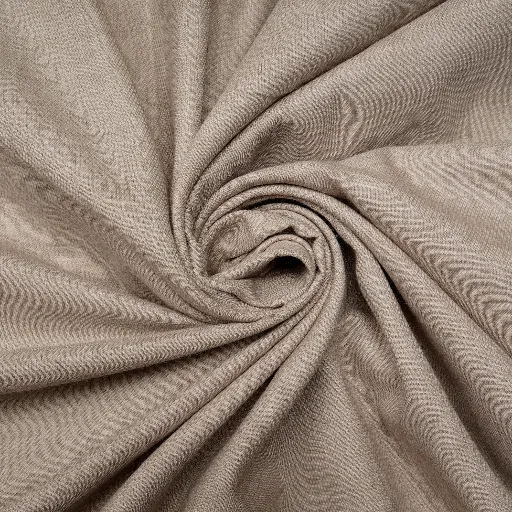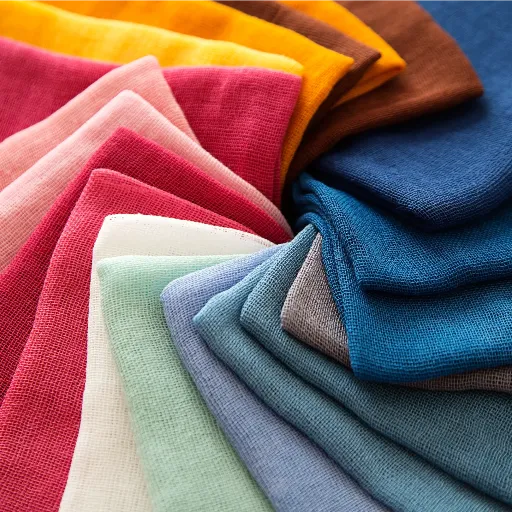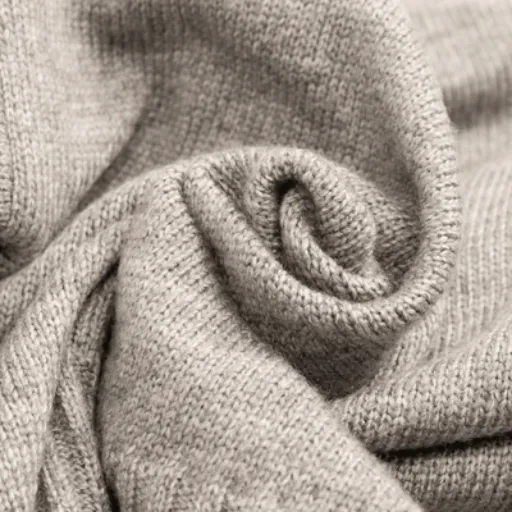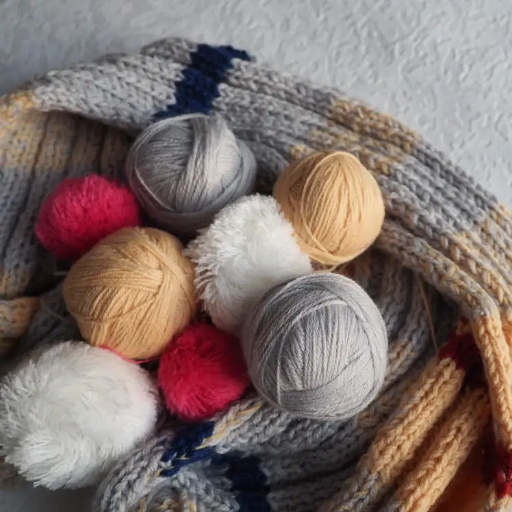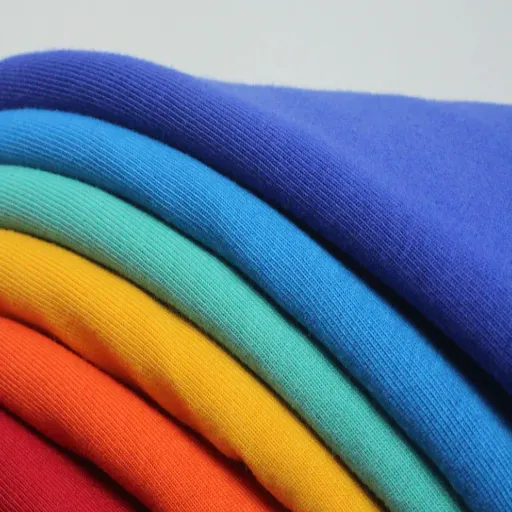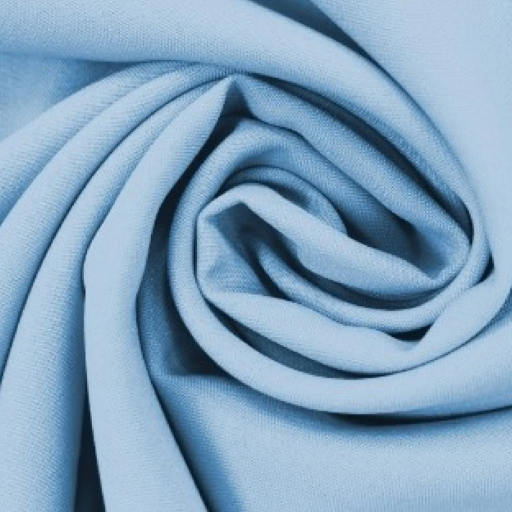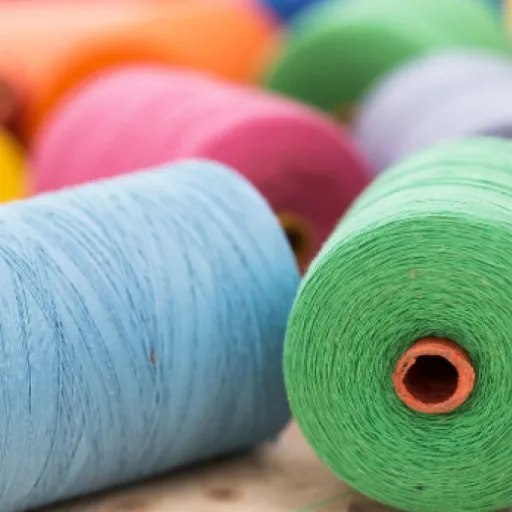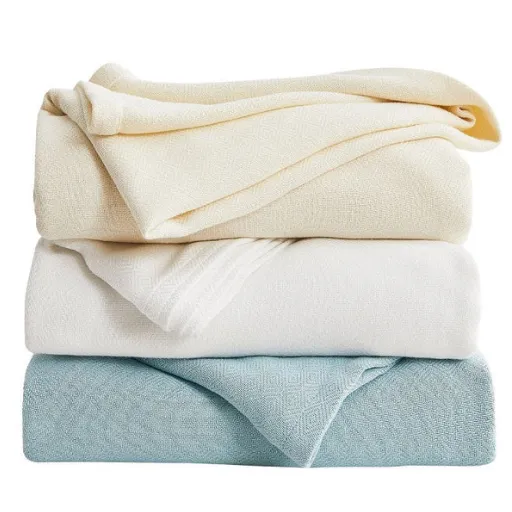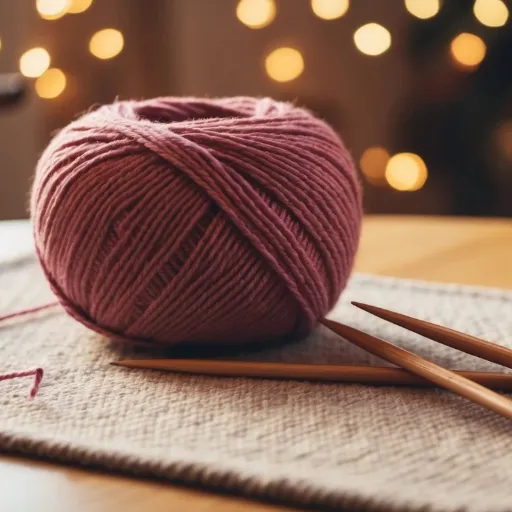The selection of materials for baby blankets and newborns’ clothes is made by parents who usually give great importance to comfort, safety, and durability. Among the various options, polyester yarn is the one that is most commonly used as it is very economical and easy to care for, but is it really safe for infants? This question becomes very important for caregivers who want their children to have the best materials around. In this article, we will thoroughly examine polyester yarn and its application for babies. We will delve into its characteristics, and at the same time, we will consider and weigh the pros and cons, if any – this article is your complete guide to getting the facts about polyester yarn and blankets for babies. The parents who are worried as well as the people who wish to present a gift will find us offering informed choices that contribute to the health and the happiness of the baby they are concerned with or that they are fond of.
Understanding Polyester and Its Uses in Baby Products

Polyester is a synthetic fiber with many advantages, including its long-lasting nature, low cost, and flexibility, which have led to its widespread use in baby products such as blankets, clothes, and toys. Its lightness, resistance to shrinking and stretching, and easy care make it a choice for parents who want low-maintenance options. Furthermore, polyester can be mixed with other fibers to get the softness and comfort that are the main characteristics of baby products. On the other hand, there are still some issues regarding polyesters’ breathing and their ability to irritate delicate skin. By using high-quality, baby-safe polyester products that adhere to safety standards, you can secure the baby’s comfort and safety.
What is Polyester Yarn?
Polyester yarn is a synthetic fiber type made from polymer fibers mainly coming from polyethylene terephthalate (PET). Characteristics like durability and resistance to stretching, shrinking, and wrinkling give polyester yarn incredible versatility. Moreover, its strength and luster lead to a wide range of applications in the industry, with the most common use being in the clothing, upholstery, and home textile sectors. The yarn’s ability to keep its shape and resist wear makes it an excellent choice for these applications. The technology has evolved to now offer softer and more breathable polyester yarn, thus providing extra comfort and usability. Moreover, there is a growing demand for recycled polyester yarn, made from plastic bottles or other waste, as it is a sustainable option that aligns with increasing eco-friendly initiatives.
Characteristics of Polyester Fibers
Polyester fibers have acquired an excellent reputation for their durability, resilience, and versatility. They boast high tensile strength, enabling them to withstand stretching and wear easily, making them suitable for numerous applications. Besides that, these fibers are also impervious to shrinking, wrinkling, and losing color, thus giving a long-lasting, pleasing appearance. The water-repellent property of polyester makes it quick-drying and less vulnerable to water stains. Furthermore, polyester is a lightweight material that retains its shape and can be easily mixed with other fibers to enhance its characteristics. Progress in manufacturing has made polyester more breathable and softer, which is one reason it is increasingly used in different sectors.
Common Uses of Polyester in Baby Items
- Clothing: The primary reason polyester is utilized in baby clothing is its ability to withstand wear and tear, resist wrinkling, and keep bright colors after many washes.
- Blankets and Linens: The softness, quick drying, and easy washing properties of polyester make it suitable for baby blankets, crib sheets, and bedding.
- Stuffed Toys: Polyester fibers are used in stuffed animals and toys because they are soft, hypoallergenic, and easy to clean.
- Car Seat Covers: Polyester fabric is commonly used for car seat covers and padding due to its durability, stain resistance, and ability to withstand wear and tear.
- Diaper Bags: Water-resistant, lightweight, and rigid to handle frequent use, polyester is the material of choice for diaper bags.
Safety Concerns Regarding Polyester Yarn for Babies

Polyester yarn is generally considered a safe material for baby products; however, some concerns need to be considered. Overheating or discomfort might occur in specific situations, since polyester is a synthetic fiber and may not be as breathable as natural fibers. Moreover, some chemicals used in the production of polyester might irritate delicate skin if not thoroughly cleaned or certified as safe for kids. It is always a good practice to use the best quality, hypoallergenic, and baby-safe certified polyester yarn, while also following the correct care and cleaning procedures to preserve the safety and comfort of the fabric.
Are Polyester Fibers Safe for Babies?
If specific steps are taken, polyester fibers can be safe for little ones. To start with, the selection of polyester products should be based on those that are claimed to be hypoallergenic and certified safe for babies. Moreover, taking good care of the fabric and cleaning it correctly can help minimize the risk of skin irritation. Although polyester can occasionally lead to heat build-up, choosing good-quality and breathable types may help to maintain comfort and safety. When selecting polyester products for infants, they should always be scrutinized for baby-safe certifications and trustworthy brands.
Potential Skin Sensitivities and Allergies
The skin of infants is very sensitive and, therefore, much more likely to get irritated or develop allergies. The most common symptoms of skin sensitivity are redness, rashes, dry patches, or swelling, which can be caused by the baby’s clothes, detergents, or the environment in general. Polyester is a strong and practical fabric that is often used. Still, at the same time, it might increase the discomfort of the skin, especially when it is of lesser quality due to its synthetic nature and non-breathability. To lower these risks, it is advisable to use hypoallergenic laundry detergents and polyester blends made explicitly for people with sensitive skin. In case of any persistent signs of irritation, it is essential to take the baby to a pediatrician to find out if allergy or contact dermatitis is the cause.
Expert Opinions on Polyester Yarn Safety
Experts think that polyester yarn, when produced to good quality standards, is safe for most daily applications, including textiles and clothing. However, the experts also indicated that people with sensitive skin or particular allergies may get irritated if they come into contact with lower-grade polyester or harsh chemicals used in its manufacturing. To guarantee safety, it is recommended to opt for high-quality certified polyester alternatives and follow good washing and care practices. For patients with continuous skin problems, a visit to the dermatologist is suggested.
Comparing Polyester Yarn with Natural Fibers
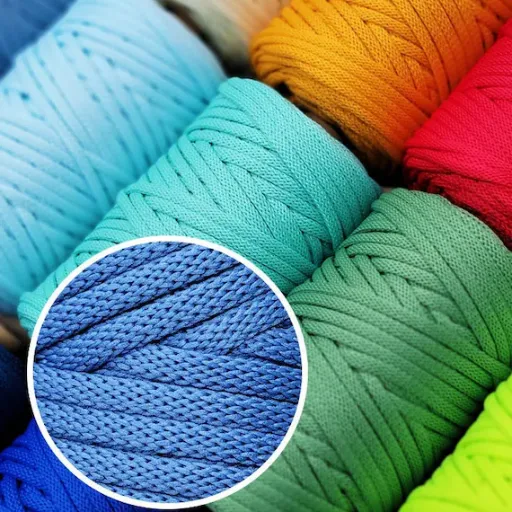
Polyester yarn and natural fibers differ in composition, durability, moisture management, texture, environmental impact, and maintenance.
| Parameter | Polyester Yarn | Natural Fibers |
|---|---|---|
| Composition | Synthetic | Organic |
| Durability | High | Varies |
| Moisture | Wicks away | Absorbs |
| Texture | Smooth | Soft/Natural |
| Eco Impact | Non-biodegradable | Biodegradable |
| Maintenance | Low effort | High effort |
Cotton vs. Polyester: Which is Safer?
The choice between cotton and polyester safety must be made after taking the different factors into account like skin sensitivity, environmental implications, and flammability. Cotton, a natural fiber, is often considered the safest option for people with sensitive skin or allergies due to its hypoallergenic properties. The production process of synthetic fibers like polyester involves the use of harsh chemicals that can sometimes irritate.
When considering nature’s perspective, cotton is a nonpolluting option because it is biodegradable, making it the most eco-friendly choice. Traditional cotton farming, however, harms the environment as it uses a lot of pesticides and water. To save the environment, it is essential to recognize that polyester is not biodegradable and contributes to microplastic pollution. The process of recycling polyester has significantly lessened the impact of its environmental footprint.
Cotton, in respect of flammability, is more prone to catching fire than polyester and hence less usable in places with high fire risk. Nonetheless, polyester, when it comes to ignition, melts and can cause severe skin burns. Ultimately, the safety of each material depends on the intended use and the individual’s priorities, such as skin health, environmental concerns, or fire safety.
Wool vs. Polyester: Breathability and Comfort
Wool is more breathable and moisture-absorbing, while polyester offers better durability, moisture-wicking, and lightweight properties.
| Parameter | Wool | Polyester |
|---|---|---|
| Breathable | Yes | Moderate |
| Moisture Abs. | High | Low |
| Durability | Moderate | High |
| Comfort | Soft | Smooth |
| Warmth | High | Moderate |
| Lightweight | No | Yes |
| Stretch | Moderate | High |
| Quick Dry | No | Yes |
| Odor Resist. | High | Low |
| Skin Feel | Natural | Synthetic |
Bamboo vs. Polyester: Environmental Considerations
Bamboo is biodegradable, renewable, and less energy-intensive, while polyester is non-biodegradable, petroleum-based, and often releases microplastics.
| Parameter | Bamboo | Polyester |
|---|---|---|
| Biodegradable | Yes | No |
| Renewable | Yes | No |
| Energy Usage | Low | High |
| Water Usage | High | Low |
| Chemical Use | Low | High |
| Microplastics | No | Yes |
| Durability | Moderate | High |
| Production Cost | Higher | Lower |
Polyester Yarn in Baby Products
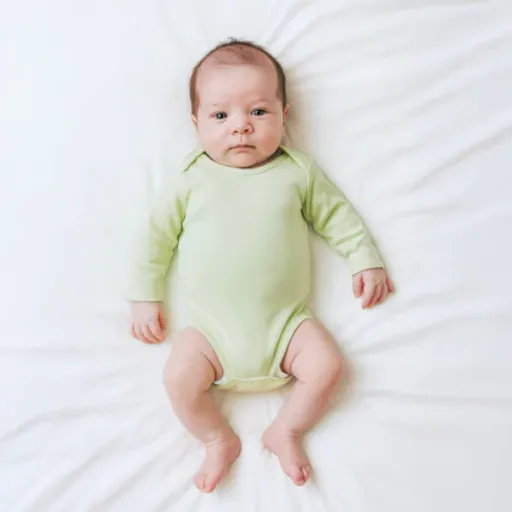
Among the different fibers, polyester yarn reigns supreme in the baby products industry owing to its exceptional durability, low production costs, and excellent resistance to wear. No doubt, these attributes make it a practical choice for various baby products such as blankets, clothes, and toys. Still, on the other hand, polyester also has certain disadvantages like non-biodegradability and microplastics release during washing, which are surely not good for the environment. Furthermore, as a petroleum-based product, it undergoes a significant chemical process before reaching the market. So, when considering baby products, one must weigh environmental and health impacts against the benefits of polyester being cheap and long-lasting.
Common Uses of Polyester in Baby Blankets
- Soft and Lightweight Material: The softness and lightness of polyester often make it the primary material for baby blankets, ensuring very good care and smooth handling.
- Durable and Long-Lasting: The material’s longevity is the main reason for its use in producing baby blankets that are constantly washed and used without significant wear and tear.
- Warmth and Insulation: The synthetic fibers of polyester are the main reason for its excellent insulation quality, keeping babies warm and cozy even in cold weather.
- Stain Resistance: Thanks to its stain-proof property, polyester is a perfect choice for baby blankets that are subject to frequent washing and dirtying.
- Affordable Option: The price of polyester baby blankets is cost-effective, making them very accessible and budget-friendly for families.
Benefits of Using Polyester for Baby Clothing
- Durability: Polyester is highly durable and can endure washing and daily use without any issues, which is why it is recommended for infants’ clothes.
- Easy Maintenance: Polyester garments are easy to wash and do not get creased easily which means less effort for the laundry and maintenance.
- Lightweight and Comfortable: Polyester textile is lightweight and so it is comfortable for babies to wear without being disturbed the whole day.
- Quick-Drying: Polyester clothes take less time to dry, making them an excellent choice for busy parents who need their kids’ clothes ready quickly.
- Variety of Designs: Painting polyester is straightforward, offering a wide range of colors and patterns to choose from, making baby clothes both practical and visually attractive.
Polyester Fibers in Crochet and Knit Baby Items
Polyester fibers are the most common materials used in crocheted and knitted baby items because of their durability, softness, and low maintenance. They produce light and warm clothes or accessories, ensuring that babies are comfortable and their skin is not irritated. Besides being resistant to shrinking and stretching, polyester yarns also make sure that handmade products maintain their shape and quality for a long time. Moreover, they are easy to wash and dry quickly which is why they are the best choice for parents. Due to an extensive range of colors and textures available, polyester fibers represent a multi-functional source for producing nice-looking, practical baby items.
Practical Tips for Choosing Safe Yarn for Baby Products
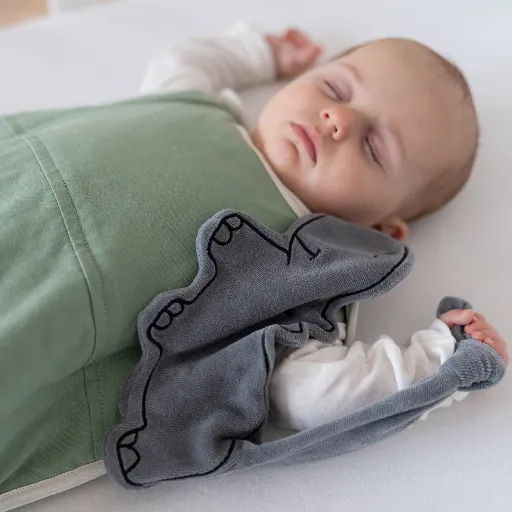
- Check for Hypoallergenic Materials: Select yarns that are labeled as hypoallergenic to minimize the chances of skin irritation or allergic reactions.
- Avoid Rough Textures: Make sure to pick the softest yarns with smooth texture so that no scratching or irritation happens to the baby’s sensitive skin.
- Select Natural Fibers When Possible: Use natural fibers such as cotton or bamboo that allow air to pas through and are gentle on skin.
- Ensure Easy Care: Choose yarns that are machine-washable and long-lasting to make cleaning easier and maintain the quality.
- Skip Hazardous Additives: Do not use yarns that have been through processes like chemical treatments or dyes, as these might be harmful for babies.
- Test for Colorfastness: Ensure no dye runs, as this may lead to staining or skin irritation.
- Check Labels: Product labels should always be read for the safety certifications and recommended uses for baby products.
What to Look for in Safe Yarn for Baby Blankets
When choosing safe yarn for baby blankets, you should first consider softness and comfort to ensure it is gentle on a baby’s delicate skin. Natural fiber yarn, like cotton or bamboo, will be the best choice since they are all hypoallergenic and breathable too. Choose yarns that are washable and durable, as they can withstand regular washing and still maintain their quality. Stay away from yarns that contain harmful chemicals, dyes, or finishes, and look for labels that show they are certified as safe for children’s products. Always make it a point to test for colorfastness to avoid causing staining or skin irritation.
Best Practices for Knitting and Crocheting Baby Items
When knitting or crocheting baby items, I make it a point to reinforce all seams and cut off any loose threads so that there is absolutely no risk to the baby. I give first place to soft and light patterns so that they do not disturb the baby and, at the same time, I avoid complicated designs which might irritate the baby’s sensitive skin. Furthermore, I always wash the completed items in a baby-safe detergent to make them clean and soft before giving or using them.
Reference Sources
-
Is Polyester Safe for Babies? – Discusses the general safety of polyester for babies and its impact on sensitive skin.
-
What fabrics are safe for babies? – Explores the exposure of babies to microplastics from polyester fabrics and its implications.
-
Is Polyester Safe for Babies? Facts All Parents Should Know – Provides insights into why polyester may not be the safest choice for baby clothing and bedding.
-
Is Polyester A Safe Fabric for Babies’ Clothing and Bedding? – Highlights potential issues with polyester, such as chemical treatments and heat retention.
-
The Truth About Polyester – Discusses the toxic chemicals in polyester and its potential health risks.
Frequently Asked Questions (FAQs)
Is Polyester Yarn Safe for Babies?
Polyester yarn can be considered safe for infants when tested and certified according to a safety standard like Oeko-Tex® Standard 100. It is still necessary though, to pick the highest quality polyester that is not tainted with any harmful chemical substances or toxins.
What Are the Safety Concerns with Polyester Baby Items?
A few of the polyester baby items may be made with non-permitted materials or be processed in a way that introduces toxic chemicals. It is always best to look for certified suppliers like GOTS or Oeko-Tex® to be sure that the yarn is non-toxic and infant/toddler friendly.
How Does Polyester Yarn Compare to Natural Fibers for Baby Blankets?
Natural fibers like organic cotton and merino wool have the upper hand in softness and breathability compared to polyester yarn, which is strong and durable. Also, natural fibers are less prone to cause skin irritations for babies who have sensitive skin.
Can Polyester Yarn Cause Irritation for Babies?
Polyester yarn could irritate in babies due to the moisture it holds against the skin, as it has low air permeability compared to natural fibers. In some cases, particularly for babies with sensitive skin, the irritation could result in conditions like eczema.
What Should I Consider When Selecting a Yarn for Baby Products?
When selecting yarn for baby products, softness, breathability, and potential allergens should be among the first factors to consider. One would be wise to choose baby-safe yarn that withstands machine washing and is free from hazardous chemicals.
Is Acrylic Yarn a Safer Choice than Polyester for Babies?
Acrylic yarn is also synthetic and may have irritants or harmful chemicals in its composition. Both acrylic and polyester yarns can be safe, but it is essential to confirm that they are free of toxic substances as well as to have them certified for use by infants.
What Are the Benefits of Using Polyester Yarn for Baby Blankets?
Polyester yarn is even more beneficial for baby blankets since it is machine washable, strong, and durable. It also qualifies as an easy and quick care item while keeping the baby warm. However, it is necessary to select good-quality yarn that is safe for babies.
Final Thoughts
When choosing materials for your baby, always prioritize safety, comfort, and quality. While polyester yarn offers numerous practical benefits, make informed decisions based on certifications, quality standards, and your baby’s individual needs. The health and happiness of your little one should always come first.








